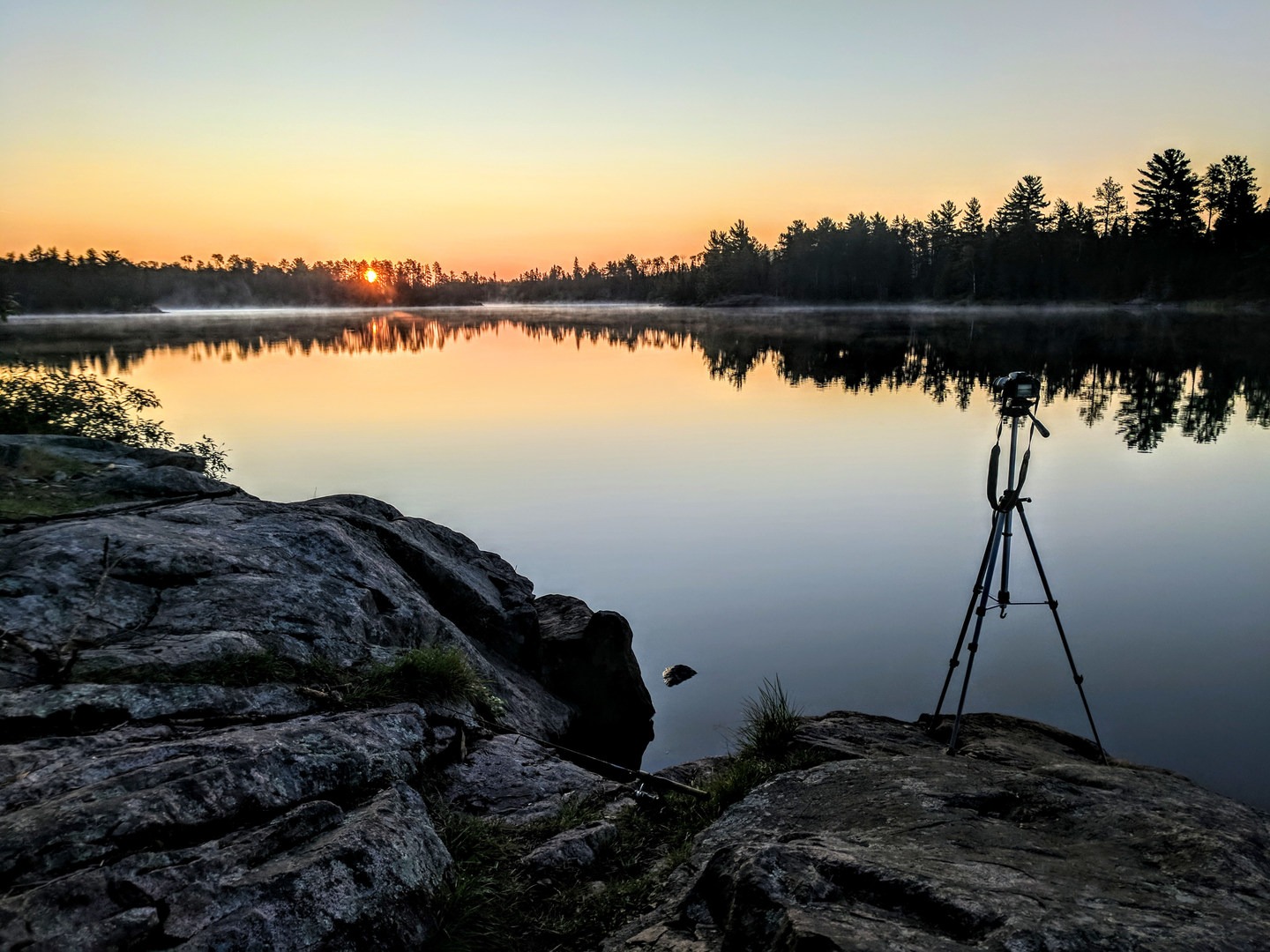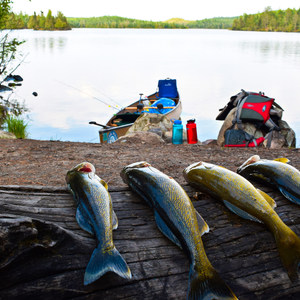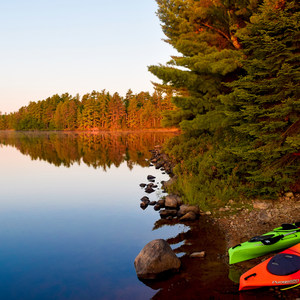The Boundary Waters Canoe Area is a wild and pristine backcountry experience. Within Superior National Forest in northern Minnesota and sharing its northern border with Quetico Provincial Park in Ontario, Canada, over a million acres are open to exploration. The two parks reflect each other and help remind us of the true nature of the area.
About a fifth of the Boundary Waters acreage is covered with over 1,100 lakes and rivers, and it provides one of the most unique settings for a backcountry experience in the world. It is one of the few, if not only, places on earth where a pack of timber wolves howl in the distance while a loon's calls echo across the rocky, forested shores. Beavers work tirelessly to build their dams while you drift across a lake and fish for dinner. A moose may meander through the woods as it works its way to its next snack. Such a unique experience, unlike backpacking, requires only a boat loaded with as little or as much as it can fit, both your vessel of transport and of tonight's catch.
The lakes and rivers that make up the BWCA are one enormous ecosystem that is interconnected via portages. There are no designated routes in the BWCA. Visitors are free to plot their own route through it. A person could visit it thousands of times and never make the same trip. It’s basically a playground for one to explore to the heart’s desire.
That being said, you must take it seriously. With proper preparation, the BWCA is a place of enjoyment and fun. There is no money or cell service, only what you bring with you and whatever Mother Nature throws at you. It truly is one of my favorite places on Earth.
After all the trips I have made there in the decades since I was young, I have developed a strong connection to these woods. It has dug into my soul and created a sense of need. It’s a place you can go to be completely alone.
Over the years, I have found these few steps to be the best way to plan a trip to the BWCA.
1. Choose Your Trip Type
The route you choose will depend on the style of trip you want to do. Some decide to fish while others just want to paddle through the sights. Knowing what kind of trip you are looking to do makes a big difference.
Kawishiwi River and Moose Lake are great examples, and both are beginner routes that can easily be made into something a little more difficult.
2. Pick an Entry Point and Reserve a Permit
To enter the BWCA, there are a few rules that you must follow. You are required to purchase an entry permit for the specific date and location you are entering. Availability is limited for each location and each day, so it is important to make sure there is one available for purchase. Permits can be purchased from Recreation.gov.
3. Reserve Lodging for Your Arrival and Departure
You may need to arrange a place to stay before and/or after you trip. It can be difficult to get in or out of the BWCA in addition to a long-distance drive. Search for potential lodging options and book the night before your entry permit date and the night of your exit date. Some outfitters will require you to be there the night before your trip to allow for a safety and planning session.
4. Obtain Any Licenses
Fishing licenses are required in the state of Minnesota and must be obtained if you plan to fish at all. Vessels must be registered in your home state or the state of Minnesota; this is required for all watercraft crossing BWCA borders. If you are using an outfitter, check to see the watercraft is registered and valid before setting off. You don’t want to get caught with an unregistered boat!
5. Assemble or Acquire Any Gear
It’s important to go through the gear you plan on bringing. If something doesn't work, you don’t want to find out at 3 a.m., when it’s raining and you are 30 miles from the nearest exit point.
If you don’t know what you need, use the BWCA's sample checklist. It covers most of your needs. Modify as necessary for the style of trip that you have chosen. This portion of planning is usually the longest and hardest part.
Note that burning garbage is not allowed in the BWCA. You will need to bring garbage bags with you to pack out all waste. Remember to bring plenty of bug spray and toilet paper.
Don’t be afraid to triple check your gear list. I usually do multiple times, and no matter what you do you’ll never feel like you are completely packed.
If you don’t have any sort of equipment to handle a trip like this, fully outfitted trips are offered by most outfitting companies. They follow these steps, pack your gear, train you as necessary, help you to plan your route, and drop you off at an entry point. Find a complete list of outfitters here.
6. Don't Forget Maps!
Paper maps are an important part of the experience and an absolute necessity. Don’t rely on technology for navigation; good luck finding power in the BWCA. Paper maps are light, and good ones resist water. Most importantly, find maps with portages marked. These will come in handy when you get to one side of a lake and the portage point is unclear.
7. Be Respectful
This is wilderness area, the highest form of protection the government can give. In order to protect these places, we must be respectful of them and leave them the way we found them. That way they can be enjoyed for generations to come.
Practice Leave No Trace principles. If you stumble across a campsite that has some remaining garbage from the last occupants, please respectful and take it with you. Camp only at designated U.S. Forest Service campsites and burn wood only in designated fire grates.
Ranger stations and outfitters are available near access points to the BWCA, and they are required to answer any questions and help you understand the rules. For any other questions, visit www.bwca.com.







Comments
Sign In and share them.